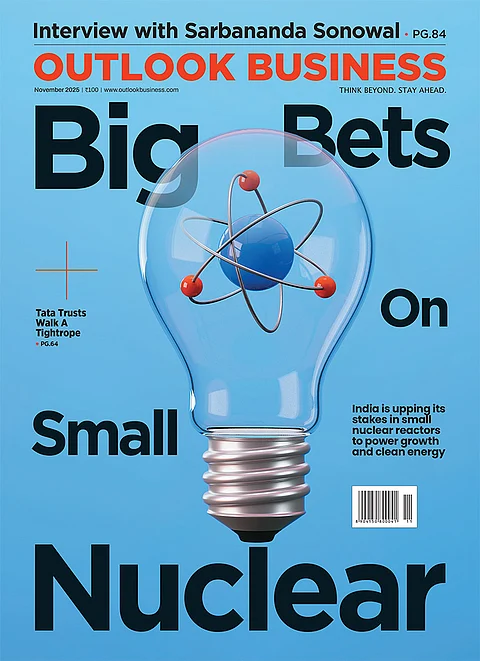The environmental, social and governance (ESG) ecosystem is driven by corporate innovation and strong will. The ESG framework helps stakeholders understand how an organisation is managing risks and opportunities related to ESG criteria (which are sometimes called ESG factors). This methodology considers a company’s practices and policies that impact the environment, such as climate change and natural resources, the social implications for employees and stakeholders and the governance framework and ethical standards.
Today, several factors are curbing the effectiveness of the forward-looking ESG approaches. Many initiatives are being taken to enhance ESG principles, such as innovative process flows, transparency and timely reporting, yet the fundamental roadblocks take time and effort. Many businesses still have a limited understanding of the positive impact of embracing sustainability on corporate performance and are hesitant to commit. Business leaders are forced to think about short-term profits versus long-term sustainability.
Here are some aspects that pose a challenge to ESG integration, and in this article, I will focus on the environmental factor.
Fossil Fuels: The First Go-To Option
With the rise of Industry 4.0, manufacturers are achieving higher levels of efficiency than ever before; they have increased their digital investment over the past few years and accelerated the adoption of emerging technologies. We will continue to see more digital engagement with suppliers to improve quality control, strengthen customer experiences and drive sustainable initiatives through a circular economy.
However, this industrial revolution is more than just a technology-driven change; it is an opportunity to create equitable growth and a sustainable future for individuals, organisations and communities.
Amid this industrial revolution and advocacy for transition to a sustainable future, today, investment spending in fossil fuels is more than double the levels needed for a net-zero emission scenario by 2050.
For more than a century, fossil fuels have been entrenched in every aspect of the economy and people’s lives in India. We use them to heat our homes, cook our food and fuel our cars. A transition away from fossil fuels is a huge task—one that the energy industry and world leaders have seen coming yet have slow-walked.
The only way to achieve that is through bold, systemic policy changes that would rapidly and equitably transform the entire energy system that people have come to rely on in their daily lives. However, this decision and the bulk of the responsibility for a faster transition have been put on future generations. With rapid adoption and easy access to clean energy sources, a wean-off crusade must take place, bringing cleaner energy sources to the fore while giving the older fossil fuel energy sources a back seat.
Fossil fuels are Predictable
Fossil fuels—including coal, oil and natural gas—have been powering economies for over 150 years and currently supply about 80% of the world’s energy. Fossil fuels are more predictable in their economic feasibility and reliability aspects, while green energy sources are still coming of age. Electricity demand is still concentrated in large, energy-intensive cities with their rising population, commerce and cultural hubs and hospitals, and will be even more so in the coming decades.
Cities need large amounts of steady, reliable power, and meeting those demands with variable renewable energy (wind and solar) sources may seem to be a challenge unless we have a rapid digital transformation, AI-powered utility technologies and the ability to manage prosumer expectations and behaviours.
According to the Economist Intelligence Unit, despite the need to tackle climate change, energy transition will proceed at a snail’s pace over the next decade, and by 2032, fossil fuels will still account for 78% of the global energy mix.
How to Accelerate the Change
We often forget that consumers or citizens—and not governments, regulators or companies—pave the way for systemic change. We are all consumers of energy services, and we all have the potential to drive tipping points in the just transition. Let us talk about the exponential growth in the demand for electric cars—sales exceeded 10 million in 2022, and a total of 14% of all new cars sold were electric in 2022, up from around 9% in 2021. Only 10% of this spending can be attributed to government support; the rest was from consumers.
Consumers ultimately pay the price of rising healthcare costs due to carbon emissions and experience hardships in the form of worsening extreme weather, irreversible ecosystem shifts and loss of life. While governments and investors see that the next chapter of the industry is clean energy technology manufacturing—batteries, electric cars, solar panels, etc—and they are providing huge incentives to investors, it is the consumers who should actively demand and drive this change.
Consumers and Market Disruptions
Market disruption and climate change are driving consumers to think about the environment differently and will impact how they assess their behaviours, homes, values and lifestyles in the future. Today, companies and governments have an opportunity to help consumers transition to a future that guarantees sustainability, security and affordability in the long term.
Industry and governments need to adopt a new way of thinking about putting consumers—or people—at the centre of change and enable their active participation in planning future transportation, food and energy systems.
Anantshree Chaturvedi is the vice-chairman and CEO of Flex Films International, a flexible packaging film manufacturer











